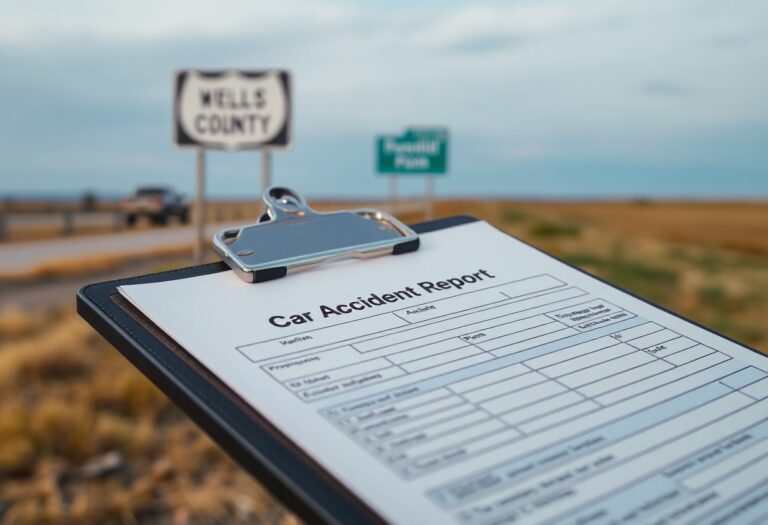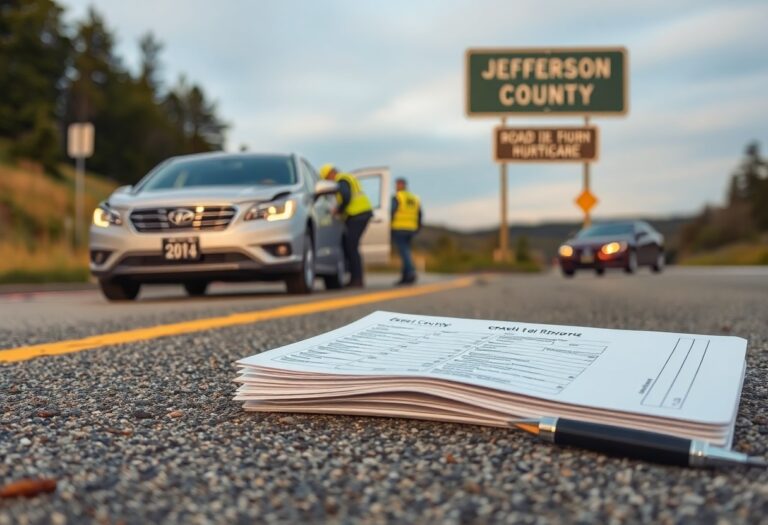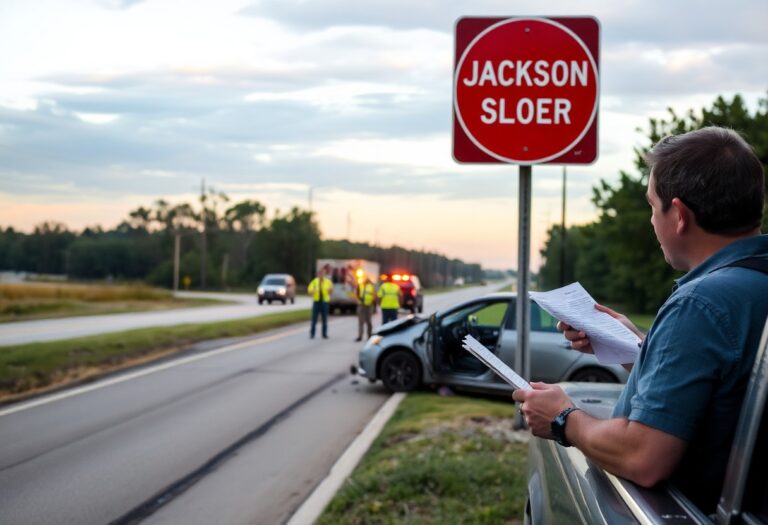Many residents of Camas County, Idaho, find themselves needing to navigate the process of obtaining a crash report after an automobile accident. Understanding how to access and interpret these reports is vital for your insurance claims and legal documentation. This guide will provide you with clear, step-by-step instructions to help you efficiently and accurately acquire your crash report, ensuring you don’t miss any important details in the aftermath of a collision. With the right information, you can manage the situation effectively and move forward smoothly.
Navigating the Legal Labyrinth: Understanding Crash Reporting Laws in Idaho
Understanding the framework of crash reporting laws in Idaho can seem daunting, but familiarizing yourself with the process can significantly impact the outcome of your situation. Idaho law mandates that a crash report must be filed for any incident resulting in injury or significant property damage. Additionally, knowing your rights and responsibilities regarding documentation can streamline the resolution process and help ensure fair compensation.
Key Statutes Relevant to Accident Documentation
Idaho Statute § 49-1301 outlines the requirements for drivers involved in a motor vehicle crash. Specifically, it stipulates that parties must report certain accidents to law enforcement and provides a clear framework for when a report is required. Familiarity with this statute will aid in gathering the necessary documentation needed for your claim.
Impact of Local Laws on Crash Report Creation
Local laws can significantly influence how crash reports are created in Idaho. Each jurisdiction may have its own procedures and forms that must be followed, often adding layers of complexity to the documentation process. For instance, police departments may require a specific format or have varying timelines for reporting. Additionally, local regulations can dictate whether an accident report is publicly accessible, affecting how you obtain your records.
The impact of these local laws is significant; failure to comply with specific reporting procedures can lead to delays or complications in your insurance claim. For example, in some jurisdictions within Idaho, reports might need to be submitted within 24 hours of an accident, while others could allow up to 10 days. This variation emphasizes the importance of understanding local requirements thoroughly because any discrepancies can hinder your ability to receive the compensation you deserve. Understanding these nuances not only ensures compliance but also empowers you to navigate the aftermath of a crash more effectively.
The Anatomy of a Crash Report: Essential Components Every Idaho Resident Should Know
Understanding the structure of a crash report helps you accurately document crucial information. A comprehensive report typically includes details about the parties involved, the date, time, and location of the accident, weather conditions, and any injuries sustained. Additionally, it outlines vehicle damage and may include witness statements, diagrams, and photos of the scene. Familiarizing yourself with these elements ensures you won’t overlook important details that can impact insurance claims or legal proceedings.
Necessary Details to Include in an Accident Report
To create a thorough accident report, you need to provide necessary details such as the names and addresses of drivers and passengers involved, insurance information, license plate numbers, and contact information for witnesses. Document the precise location of the crash, including street names, mile markers, and any relevant landmarks. Including specific details like weather, road conditions, and whether law enforcement was contacted can significantly enhance the value of your report and ensure accurate representation of the incident.
Common Mistakes to Avoid When Filling Out Reports
Accurate reporting is vital, but common mistakes can jeopardize your case. Failing to include all passenger information, neglecting to specify the exact location, or omitting how the accident occurred can result in misunderstandings or disputes later on. Misunderstandings born from vague language or inaccurate timelines lead to complications with insurance claims and legal follow-ups. Providing concise, factual statements and ensuring all involved parties’ information are documented can help mitigate these risks and reinforce your credibility in any legal context.
Many residents unknowingly fall into traps when completing accident reports. Writing down your thoughts too hastily may lead to inaccurate descriptions, while ignoring the need for a concise timeline can obscure critical facts. Additionally, providing excessive detail about non-necessary aspects might confuse the report’s focus. Instead, aim to present clear, objective information about the crash’s circumstances and the people involved. Keeping your language precise and your focus sharp can save you from potential headaches down the line.
Step-by-Step Guide: Filing Your Crash Report Effectively
Filing a crash report in Idaho involves a systematic approach to ensure that you provide all necessary details for accuracy and compliance with local laws. Following these steps will streamline the process: First, gather required information, then accurately fill out the report, and finally, submit it to the appropriate authorities.
| Steps | Action Items |
|---|---|
| 1. Gather Information | Collect data on the accident, including time, location, and involved parties. |
| 2. Fill Out the Report | Ensure all sections of the crash report are completed accurately and truthfully. |
| 3. Submit the Report | Send the completed report to law enforcement or your insurance company. |
Gathering Necessary Information Post-Accident
After an accident, it’s vital to collect all pertinent information for your crash report. This includes the date, time, and location of the incident, as well as details about the vehicles involved, insurance information, and any witness accounts. Make sure to record names and contact information for all parties, including officers on the scene.
Submitting Your Report to the Right Authorities
Once you’ve completed your crash report, submission becomes the next priority. It’s important to determine the correct entities to receive your report, which typically includes your local police department and your insurance provider. For accidents involving significant injury or damage exceeding $1,500, you must file with the Idaho Department of Transportation.
Submitting your crash report accurately can significantly impact any claims process or legal proceedings that may follow the incident. Make sure to keep copies of the report for your records and confirm that the authorities have received it. In Idaho, reports should be filed within 10 days of the accident, particularly if a law enforcement report has not been created. If disputes arise, having a confirmed submission can support your position.
Leveraging Technology: Tools and Resources for Simplifying the Reporting Process
Utilizing technology can significantly streamline your crash reporting process in Camas County. Various tools and resources can assist you in efficiently gathering and submitting necessary information, ultimately saving time and reducing stress during an already challenging situation. Understanding how to leverage these technologies can empower you to take control of the situation and ensure you comply with local requirements.
Online Platforms and Mobile Apps
Numerous online platforms and mobile apps can facilitate the crash reporting process. Applications like Crash Report Tracker can guide you through the steps to document details, gather witness information, and even connect you with local law enforcement. Moreover, many county-specific websites have forms and resources tailored to help you submit your report electronically rather than in person, reducing the burden of paperwork.
Local Resources and Support Services for Residents
In addition to online tools, Camas County offers various local resources and support services to assist residents in navigating the crash reporting process. Local law enforcement offices are equipped to provide guidance and answer your questions about filing reports. Moreover, community organizations often host workshops that educate residents about their rights and responsibilities following a crash, ensuring you have ample information at your fingertips.
Camas County provides access to services such as the Idaho Transportation Department, which offers resources on accident reporting and traffic laws. You can also reach out to local legal aid organizations that specialize in vehicular incidents, ready to offer direct assistance and information tailored to your specific circumstances. Engaging with these local supports helps you gain confidence in the reporting process while ensuring you don’t miss any vital steps or details.
Post-Report Steps: What to Expect After Filing Your Crash Report
After filing your crash report, you’ll begin to see the wheels of the investigation turning. Authorities will evaluate the report along with any evidence gathered, which may include witness statements, photographs, and physical evidence from the scene. You might also receive follow-up contact from law enforcement or insurance representatives, depending on the circumstances of your accident. Being prepared for this communication can help you navigate the process more smoothly and keep you informed about the progress of the investigation.
Understanding the Investigation Process
The investigation process involves a comprehensive review of the crash report, where law enforcement officers assess the evidence to determine causation and liability. You may be asked to provide additional information or clarification to help them form a clear understanding of the incident. This can take time, as they may need to interview involved parties and witnesses and examine the scene if it hasn’t been cleared yet.
Possible Outcomes and Next Steps for Idaho Residents
Your crash report could yield several outcomes, depending on the gathered evidence and the circumstances. Law enforcement may issue citations if fault is determined, or you may receive notification that the evidence doesn’t support any traffic violations. Either way, you’ll need to consider your options for next steps, which could include pursuing claims with your insurance or addressing any legal ramifications.
For Idaho residents, the outcomes of your crash report can influence future actions significantly. If law enforcement decides that you were not at fault, your insurance may adjust your claim favorably. Conversely, if fault is assigned to you, understanding the implications on your insurance rates and potential reputation may be necessary. Exploring avenues such as mediation with the other party involved or legal advice can play a pivotal role in determining your next course of action. Understanding these pathways ensures you remain informed and prepared for what lies ahead.
Final Words
The process of obtaining a crash report in Camas County, Idaho, is designed to be straightforward, ensuring you have the necessary information at your fingertips. By following the step-by-step guide provided, you can navigate through the various requirements with confidence and efficiency. Whether it’s for personal records, insurance claims, or legal matters, having access to your crash report will support your needs. Make sure you keep this guide handy for future reference as you manage any incidents that may arise on Idaho’s roads.













